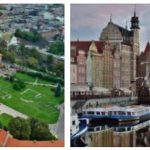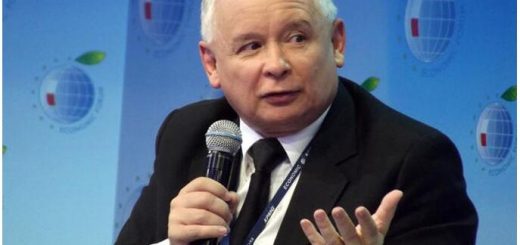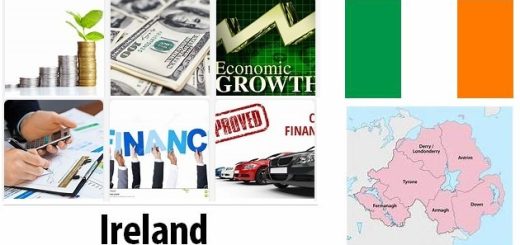Poland Economy Facts
Economical overview
Poland has had good economic development during the last quarter century. Nowadays, the Poles’ standard of living has reached 65 percent of the EU average, compared with 25 percent in the transition to market economy in the early 1990s. Poland has in recent years experienced higher economic growth than the EU as a whole.
Poland is traditionally an agricultural country, and agriculture is still important, even though the manufacturing industry, trade and service sector have developed more since the transition to market economy. Agriculture, like the important mining industry, has problems with low productivity, but the sectors employ just over a tenth of the labor force each. Industries with good development are tourism, the manufacturing industry and the pharmaceutical industry. The construction industry has also gone well. The worst development has been for the heavy industry, such as the shipbuilding industry and the engineering industry.
- Countryaah.com: Major imports by Poland, covering a full list of top products imported by the country and trade value for each product category.
Planning Economics and Transition Economics
During the communist era, heavy industry was prioritized at the expense of agriculture and light industry. The low productivity of the business sector, high production costs, waste of resources, environmental degradation and the inability of the government to meet the needs of food, housing and consumer goods contributed greatly to the collapse of the communist system.
The market economy transformations that began in 1989 led to a reduced sense of security, constant changes, closures and restructuring. The first democratic government invested in achieving a rapid economic system change. This was done through the so-called Balcerowicz Plan. At one point, prices were released and most government subsidies were abolished. The Polish currency, złoty, was devalued and made convertible (that is, it could be exchanged for western currency). The market was opened to foreign competition and all export restrictions were removed. Large parts of the heavy industry were discontinued, while the consumer goods industry and the service sector developed.
- Abbreviationfinder.org: Check this abbreviation website to find three letter ISO codes for all countries in the world, including POL which represents the country of Poland. Check findjobdescriptions to learn more about Poland.
The collapse of the command economy led to a sharp economic downturn for all countries belonging to the Eastern Bloc. During the first two years of the 1990s, Poland’s gross domestic product (GDP) fell by over 17 percent. Still, the country managed to transition to a market economy better than other states of former Eastern Europe, where the fall in GDP was in many cases above 50 percent.
Long-term economic growth
Since 1992, the Polish economy has grown by about 4-5 percent per year on average. Around the middle of the 1990s, the economy grew at its fastest pace, while falling into a weak 2001-2002. Growth then stopped at about 1 percent. From 2003, GDP growth picked up again and had an annual average of 6 percent in 2006-2008.
Even after the outbreak of the international financial crisis in autumn 2008, the Polish economy performed well. In 2009 and 2010, Poland, a member country since 2004, was the only EU country with positive growth. In 2011, Poland’s growth was 4.3 percent, clearly better than the EU as a whole. The economy has grown at about that rate ever since.
However, the European crisis affected Poland’s exports as well as domestic purchasing power, while unemployment increased. The government partly succeeded in counteracting this by budgetary tightening, which strengthened the state’s finances. By mid-2010 domestic demand had risen again and the trade balance was positive (ie exports exceeded imports).
More than two-thirds of Poland’s exports and an almost equal share of imports occur in the EU. Germany is Poland’s largest trading partner.
Faced with the economic crisis threatened by the corona pandemic, the Polish government has promised support measures (see Calendar). Employees and self-employed persons who are placed without income must receive part of their lost wages, companies must receive credit guarantees and a deadline with commitments to the state. The haulage industry fears noticeable effects despite the EU’s efforts to keep goods deliveries across borders. Polish hauliers have about 30 percent of the European market, with 4,000 transport companies and 400,000 drivers.
Waiting for the euro
In accordance with the conditions for Poland’s EU membership, the złotyn is to be replaced by the euro as soon as it meets the requirements – that is, low inflation, low debt and small budget deficits – and when the situation in the euro zone has stabilized, the Polish government now adds. The euro crisis caused Poland to hold back, although the country could later easily have been ready for the euro. Opinion polls in recent years show that support for EU membership has remained strong among the Poles surveyed, while up to three quarters want to keep the złotyn.
At the same time, Poland is one of the EU members receiving the most contributions from Brussels. In the EU’s six-year budget until 2013, Poland was able to withdraw EUR 68 billion (close to SEK 600 billion) from the Structural Funds and the Cohesion Fund (which will help disadvantaged regions join the rest of the EU). Partly because of this, Poland’s economy has fared better than the rest of the EU, including through extensive road construction and major construction projects ahead of the 2012 European Football Championship.
Poland therefore led the fight against planned fund cuts in the EU budget 2014-2020. The country claimed that increased investment was a way out of the eurozone crisis. But the Polish government risks losing influence in Brussels, when at the same time it wants to postpone the country’s own entry into the euro zone. The Conservative Government Party Law and Justice (PiS) has also drawn legal conflicts with Poland on the EU, including by reducing the independence of the judiciary (see Current Policy).
A number of problems to solve
Even before the corona crisis, despite Poland’s good prospects, there were challenges. Unemployment remained high, and dependence on EU support and foreign investment (mainly from other EU countries) remained high. Productivity in some sectors, not least agriculture and the mining industry, is low.
The lack of job opportunities has caused many young Poles to go abroad in search of work, which has drained the country of well-educated labor. Another problem is rising costs for an aging population. In order to keep young people in the country (and secure a electoral victory), the ruling Law and Justice promised before the 2019 parliamentary elections to abolish the income tax for almost anyone under 26.
When the Conservative government took office in 2016, it also launched a “Plan for Responsible Development”, which meant increased state control of the economy, especially over the banking and media industries, which the new governors considered too much dominated by foreign ownership and capital. The government has also revoked a decision on raising retirement age, which was announced in Parliament in 2012. It is estimated to cost EUR 2.3 billion annually (see Social conditions).
With several such expensive reforms in the baggage, the government has also announced an upgrading of the armed forces with large purchases of equipment (see Calendar).
Since the start of democratization in 1989–1990, all governments have promised a proper investment on the motorways, but in reality construction has been slow. Only when the European football championships were held in Poland and Ukraine in 2012 were several new motorways completed. Traffic congestion is increasing rapidly. Accessibility, especially in large cities such as Warsaw, has deteriorated over the years by rapid growth as many more people have been able to buy a car.
The first high-speed railway, between Gdynia and Kraków via Warsaw, was inaugurated in 2014.
The rivers play a relatively important role as connecting routes within the country. The most important ports on the Baltic Sea are Gdynia, Gdańsk and Szczecin. The government plans to build a canal through the Wisłanäset (Vistulanäset), which is a narrow land tongue through the Baltic Sea in northeastern Poland. It will allow vessels from the port of Elbląg to get out into the Baltic without having to cross Russian waters (Kaliningrad). The elblag canal from the 19th century, which is reminiscent of the Göta canal, is mostly used for leisure traffic.
Poland joined the EU Schengen cooperation in 2007, which means that its borders are now open to all EU citizens in the Schengen area. Most tourists come from Germany, usually for trade. The price differences for different goods can be large. Similar conditions exist at other borders, although the price gap between Poland, on the one hand, and Russia, Lithuania, Belarus (Belarus), Ukraine, Slovakia and the Czech Republic, on the other hand, are not the same. On both sides of the borders, many trade is the main source of income.
About 30 spa resorts offer treatment with mud baths and water from wells. Zakopane in the mountain range High Tatra is an internationally known winter sports resort.
FACTS – FINANCE
GDP per person
US $ 15 424 (2018)
Total GDP
US $ 585,783 M (2018)
GDP growth
5.1 percent (2018)
Agriculture’s share of GDP
2.4 percent (2016)
Manufacturing industry’s share of GDP
18.1 percent (2016)
The service sector’s share of GDP
56.4 percent (2016)
Inflation
2.4 percent (2019)
Government debt’s share of GDP
48.9 percent (2018)
Currency
PLN
Merchandise exports
US $ 253,946 million (2018)
Imports
US $ 260,055 million (2018)
Current account
– US $ 3 280 million (2018)
Commodity trade’s share of GDP
90 percent (2018)
Main export goods
steel products and machinery, ships, rail cars, cars, furniture and wood products, clothing, food, coal
Largest trading partner
Germany, UK, Russia, China, Italy













